46P-ids 2023: prediction of activity
to the list of predictions
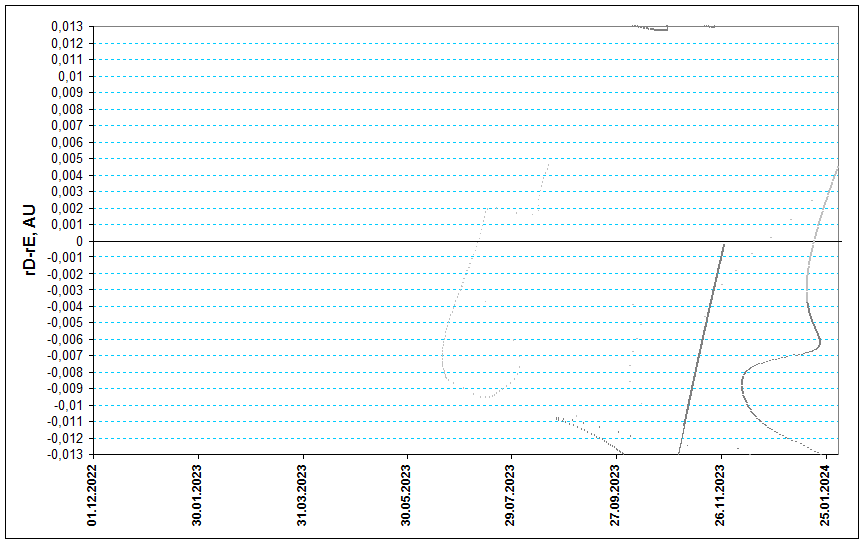
Fig. 1. Space-temporal projection of 46P-ids trails parts onto their minimal distance passages in 2023 before perihelion (correspondence between colours of the particles and their ejection velocities can be seen here).
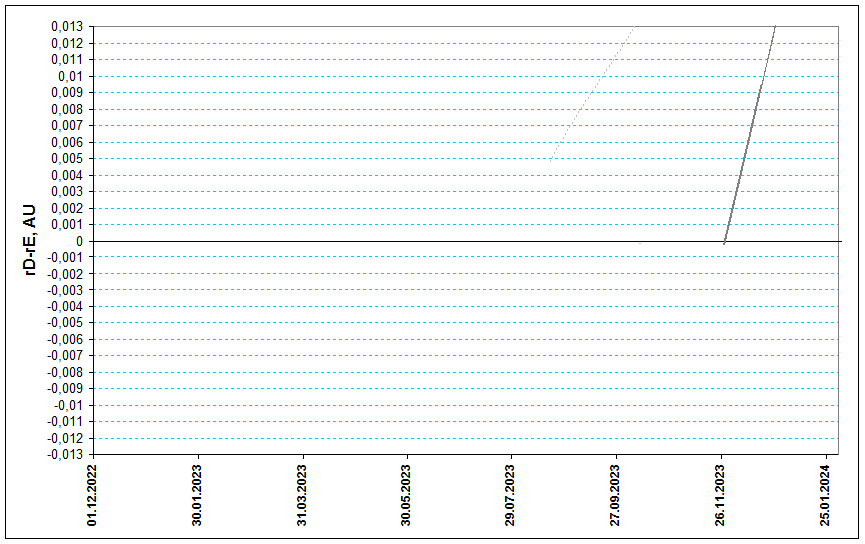
Fig. 2. Space-temporal projection of 46P-ids trails parts onto their minimal distance passages in 2023 after perihelion (correspondence between colours of the particles and their ejection velocities can be seen here).
Two remarkable encounters of the Earth with dust trails of the comet 46P/Wirtanen are found for 2023. The first of them is the encounter to particles of the 1967 trail:
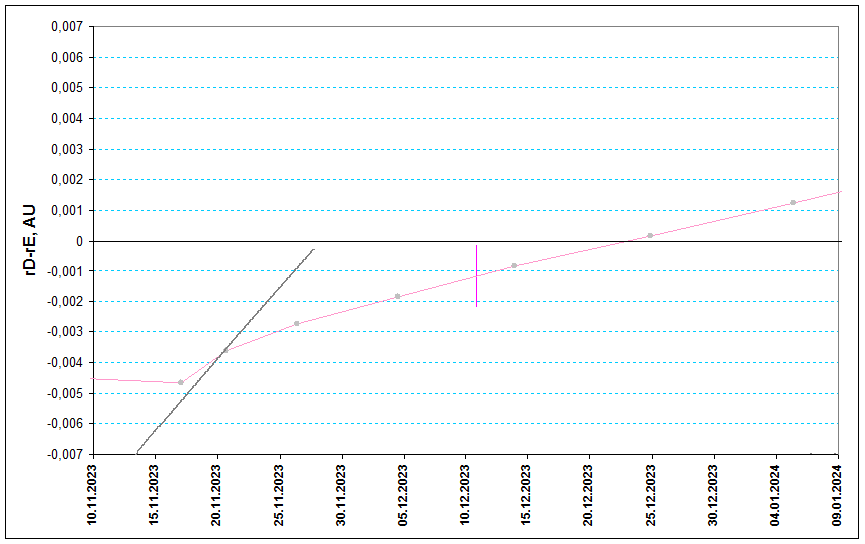
Fig. 3. Detailed space-temporal projection of 1967 trail parts onto their minimal distance passages in 2023 (correspondence between colours of the particles and their ejection velocities can be seen here).
Computed maximum time for 1967 trail is 20:55 UT on December 10 from the radiant RA=346.5°, Dec=+27.4°. The Earth is to pass from quite small distance from the trail, which is 0.0016 AU. However ejection velocity of this trail particles is 58.7 m/s which is quite high meaning that particles sizes are small, so meteors from it are expected to be very faint. Also the density of this part of 1967 is very low, it is about 1.8% of density of 1 revolution Leonids trail. Considering these parameters chances for any detectable activity from this trail is low but any observations still seem to be desirable.
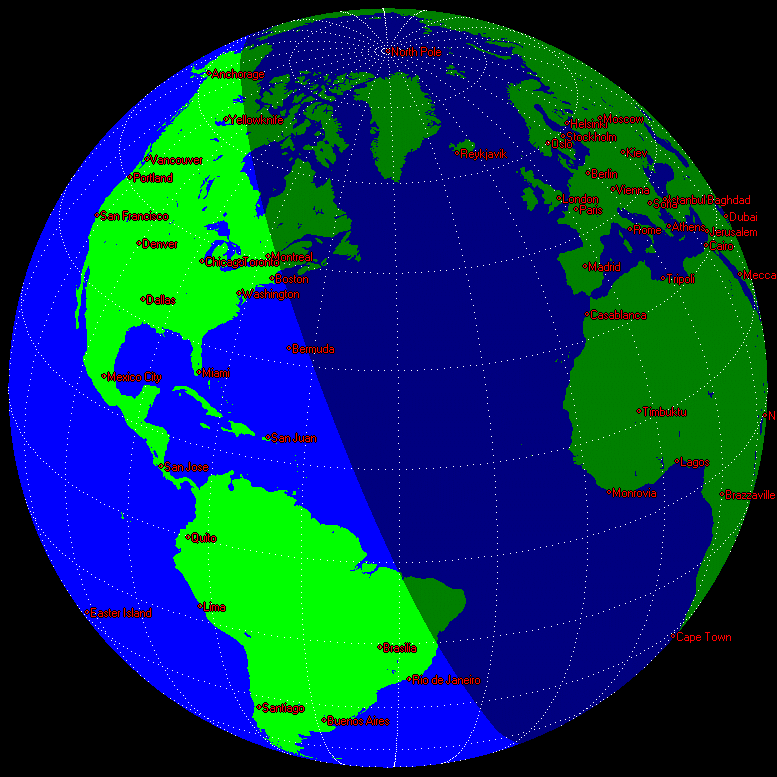
Fig. 4. The Earth as seen from coming 46P-ids meteors (RA=346.5°, Dec=+27.4°) during the expected maximum time of outburst from 1967 trail at 20:55 UT 10 December.
When activity from 1967 trail occurs at the computed time the best time for its observation would be western part of Africa and Western Europe. In Eastern Europe the radiant would be also above horizon but lower. Quite high the radiant would be above Iceland including Greenland.
The second trail encountering the Earth in 2023 is 1974 trail:
The second trail encountering the Earth in 2023 is 1974 trail:
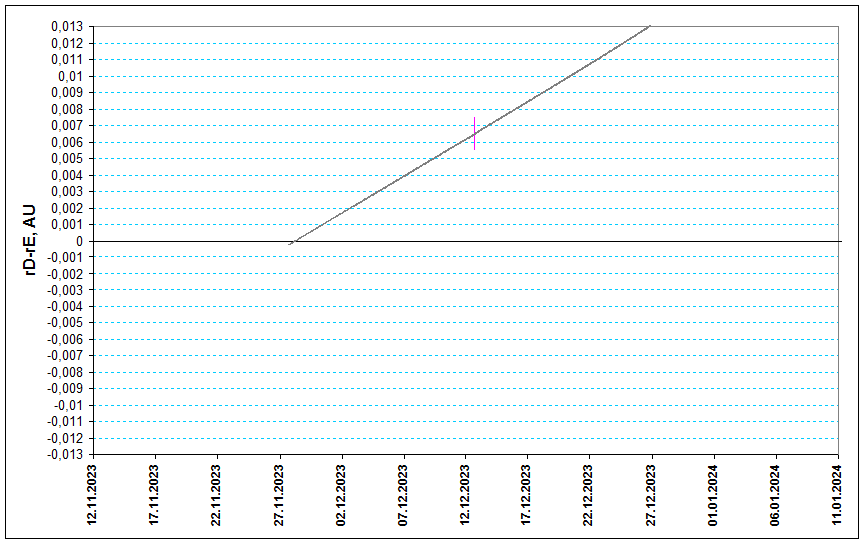
Fig. 5. Detailed space-temporal projection of 1974 trail parts onto their minimal distance passages in 2023 (correspondence between colours of the particles and their ejection velocities can be seen here).
Computed time of maximum from this trais is 17:54 UT on December 12 with the radiant RA=7.7°, Dec=-40.0°. The orbit of the comet 46P significantly change from 1967 to 1974 perihelia therefore there is large difference between the orbits of respective trails as well as between their radiants positions in the sky, especially in declinations. At the same time the 1974 trail is considerably more dense, 170 times, than the 1967 trail while ejection velocity is much slower, 27.2 m/s, which is also a positive factor for activity perspectives. The main problems with this encounter questioning any perspectives of activity at all, is significant distance to the Earth which this trail passes at, it is 0.00646 AU. Nevertheless it is also desirable to check this case with observations.
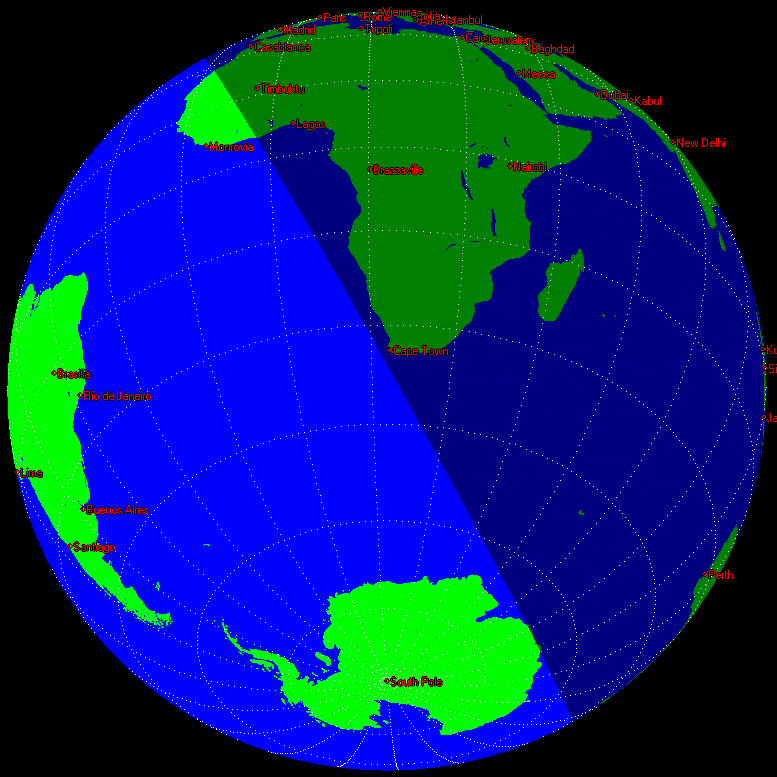
Fig. 6. The Earth as seen from coming 46P-ids meteors (RA=7.7°, Dec=-40.0°) during the expected maximum time of outburst from 1974 trail at 17:54 UT 12 December.
As the radiant of this trail is deep in the southern hemisphere its visiblity is also worse. It would be visibly only in Africa, excluding its western, southern and northern edges, as well as on adjacent territories like Madagaskar island and Arabian peninsula.
References
1. "Comet's dust 2.0" program by S. Shanov and S. Dubrovsky. [Used for orbital computations.]
2. E. Lyytinen, T. van Flandern "Predicting the strength of Leonid outbursts", 1998, Earth, Moon, and Planets, P. 149-166.
3. Jenniskens P. Meteor showers and their parent comets, 2006, 780 p. 4. Kasuo Kinoshita, http://jcometobs.web.fc2.com/ [Orbital elements of the comet 46P/Wirtanen]
5. Hewgill G. Xearth 1.1.0 (Software program), 2003.
References
1. "Comet's dust 2.0" program by S. Shanov and S. Dubrovsky. [Used for orbital computations.]
2. E. Lyytinen, T. van Flandern "Predicting the strength of Leonid outbursts", 1998, Earth, Moon, and Planets, P. 149-166.
3. Jenniskens P. Meteor showers and their parent comets, 2006, 780 p. 4. Kasuo Kinoshita, http://jcometobs.web.fc2.com/ [Orbital elements of the comet 46P/Wirtanen]
5. Hewgill G. Xearth 1.1.0 (Software program), 2003.